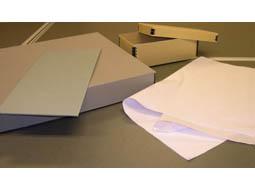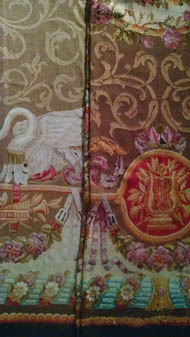Resources For Caring For Your Family Treasures

Following up on our post in May 2016 discussing methods the museum uses to store and preserve our historic collections, we thought we’d pass on even more advice to help you become more effective custodians of your family treasures.
Learn more about your treasure
Usually most of us have a vague idea of how to care for an heirloom, or have heard some advice from one source or another on how to keep it in good condition. But it’s important to keep in mind that not every tip or bit of advice is right for you and your collection, so looking through multiple sources for information is a better way to avoid making mistakes or following the wrong advice. Even for professionals, what was regarded as correct 20 years ago might not be correct today and may have changed yet again 20 years from now.
We can think of this as an opportunity to go a bit deeper and check if what we know is actually correct while perhaps learning something new and interesting. Of course if the item is particularly fragile or rare, it’s always best to seek the advice of a specialist before taking action yourself.
A few highly regarded online resources you can use to read up in detail on caring for whatever object you are interested in, from paintings to furniture to textiles and beyond are included at the end of this blog.
 The 9 Agents of deterioration
The 9 Agents of deterioration
A good place to start when considering how to care for your treasured items is to be aware of the potential ways damage can occur.
- Direct Physical Force – When any object is being directly handled or moved, it is the most likely time that it will be damaged. As a general rule of thumb, try to keep handling to a minimum. Store things in a safe place where they are unlikely to be crushed or knocked over.
- Light Damage – While UV light is famously destructive, all light exposure leads to deterioration of many types of materials in the long term. The most sensitive materials are dyes and pigments, or things made with sensitive chemical processes like many types of photographs, but even wood and various fabrics can be affected by too much light exposure.
- Pests – The list of insects and critters and the ways they may damage precious objects could fill volumes. Checking up on things and looking for signs of unwanted pests such as droppings, discoloration, and surface damage is the best way to broadly manage potential damage from pests. Catch them early because each situation likely requires a specific response that is better met before it becomes an “infestation”.
- Temperature – Various materials can handle or are best kept in a fairly normal range of temperatures. The most damaging situation for many objects occurs when there are rapid and large swings of temperature. Try to keep precious objects out of places that experience frequent temperature changes, and uninsulated spaces in general. Attics are notoriously bad places to store valuable antiques, though they are frequently used as such. Keep in mind if you are uncomfortable in the space, if it is too hot or too cold, it likely is not a good place for your heirlooms.
- Humidity – Similarly and related to temperature, the humidity, or moisture content of air, affects many objects. Rapid changes in humidity are bad for most things. High humidity can lead to swelling in wood, corrosion in metals, and mold growth which can also attract pests. Low humidity will dry things out, leading some materials to become brittle or to shrink. Stability is our friend.
- Fire – Fire probably needs no explanation, but keep in mind that even if something isn’t directly exposed to flame, the effects of even secondary smoke and soot or ash exposure can be very damaging to the surface of many things. The more layers of protection between a fire and a stored object, the safer it usually is.
- Water – Direct water exposure shares and increases the same types of deterioration as high humidity. To help avoid damage from a minor water leak or something as catastrophic as a flood, it is good practice to keep valuable objects or storage boxes up off the floor and out of low areas where water will pool, especially in basements.
- Contaminants – Pollutants and damaging gases can come from the air or nearby unstable materials like aging paper, plastics and adhesives, or even fresh paint. Common effects of nearby contaminants include discoloration, increasing brittleness, tarnishing, or the strange appearance of gummy or crystalline layers on the surface of an object. Letting things get dusty is also bad news for their long term survival. Use of archival grade or “acid free” storage materials is the best way to avoid this kind of slow deterioration.
- Thieves and Vandals – Beyond the obvious, creating an inventory and having photographs of your collection will help with insurance when dealing with the effects of these guys.
Protect it with stable materials
 Cardboards, foams, many kinds of common plastics, and most commonly available papers can all pose hazards to the physical condition of objects in contact with them over the long term because they are unstable and deteriorate over time. Archival storage supplies are just an internet search away, and if you can afford purpose built acid free materials for the housing and storage of your heirloom, that’s great. We understand that using these supplies can be costly and isn’t always feasible, so use what works for you, but be aware that it might mean that you should be a little more vigilant about keeping up with the next bit of advice:
Cardboards, foams, many kinds of common plastics, and most commonly available papers can all pose hazards to the physical condition of objects in contact with them over the long term because they are unstable and deteriorate over time. Archival storage supplies are just an internet search away, and if you can afford purpose built acid free materials for the housing and storage of your heirloom, that’s great. We understand that using these supplies can be costly and isn’t always feasible, so use what works for you, but be aware that it might mean that you should be a little more vigilant about keeping up with the next bit of advice:
Check up on it
It’s all too easy for us to box something up and tuck it away in the back of a closet, not looking at it again for years or even decades. Your treasure is surprisingly open to being irreversibly damaged when nobody pays attention to it. It’s a good idea to visually inspect your stored items and their surroundings for signs of deterioration. The longer a damaging element goes unnoticed, the less likely it will be recoverable – so keep an eye on things every once in a while.
Write down its story
What turns an average antique into a national treasure? Its story. Solid evidence of the who, what, where, when, and why is so often and unfortunately lost to memory. If you have a treasured object, are you the only person who knows the details? Often we tell our family or friends these stories, but like in a game of telephone that story gets fuzzier and fuzzier the longer it is passed on and sometimes is lost altogether.
So write it down! Do it now! Write down everything you know about the story of your treasure. Sign it, date it, and keep it somewhere where the connection between the story and the object won’t easily be lost. Just keep in mind that writing directly on the object, or stapling or taping information to your treasure is in its own way detrimental to its long term condition. Taking a photo of the object and attaching it to the description will help others match the story with the object.
Hopefully by applying some of these techniques to our own treasured items, we may take an active role in creating and passing on our own history to our descendants.
Recommended online resources for the care of objects:
American Institute for Conservation of Art and Historic Works wiki:
http://www.conservation-wiki.com/wiki/Main_Page
Canadian Conservation Institute on care of objects:
http://canada.pch.gc.ca/eng/1443109395421
Northeast Document Conservation Center resources on care for paper, books, and photographs:
https://www.nedcc.org/free-resources/overview
National Park Service’s Conserve-O-Grams: short leaflets written by museum professionals on how to care for just about anything:
https://www.nps.gov/museum/publications/conserveogram/cons_toc.html#collectionpreservation


 Today's DAR
Today's DAR